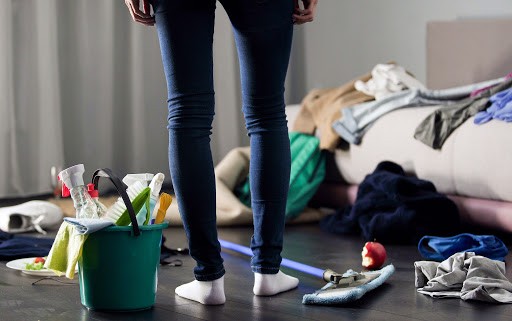Move over fad diets and quick-fix exercise programs—the latest health craze is one for your mental health and it’s come in the form of cleaning!
Organization Comes in Many Methods
There are a few names for it: decluttering, tidying, minimalism, purging. Whatever you want to call it, there’s no denying that the concept of getting rid of things has gained a following recently.
Tidy Up Your Life
The Netflix series, "Tidying Up with Marie Kondo," has brought this trend to the forefront of social media and pop culture. The show follows Kondo to several family homes to teach them how to tidy up using a method she developed called the KonMari Method™. Netflix’s twitter account reveals hundreds of photos of changes that its followers had made just days after the series released, which, not surprisingly was in January (just in time for resolutions). People are celebrating the new-found freedom that comes with paring down, and thrift stores are celebrating the influx of inventory. As the saying goes, “tidy home, tidy mind.”
Between authors like Kondo and Omaha native, Joshua Becker—writer of "More of Less," "Simplify," and "The Minimalist Home"—there are a great deal of helpful tips out there for anyone interested in seeing what all the fuss is about.
According to KonMari.com, Kondo’s method offers an approach that moves through different categories and builds upon each phase:
"The KonMari Method™ encourages tidying by category – not by location – beginning with clothes, then moving on to books, papers, komono (miscellaneous items), and, finally, sentimental items. Keep only those things that speak to the heart, and discard items that no longer spark joy. Thank them for their service – then let them go."
Organizing By Room
If you fancy a more traditional approach, break your home into spaces, and don’t try to do too much all at once. Approach the task one room at a time (living room, kitchen, bedroom, etc…)
Becker recommends starting with a simple, step-by-step process as a guide:
- Relocate things to their proper place
- Clear floors
- Clear flat surfaces
- Dig through storage areas
- Remove things that do not serve a purpose (nicknacks, decor, old cords, old manuals that can be found online)
- Store things that should be saved where they are easy to find, out of sight
- Donate things that can be reused; discard or recycle things that cannot be reused
How Tidying Up Can Improve Your Mental Health
Whichever method you choose, you’ll be doing yourself a favor by organizing your living space. Once we clear our space of visual clutter, we allow our minds to be less distracted and focus on things that we truly value. Minimizing and tidying can be a helpful way to establish our living spaces as places of rest and togetherness, rather than places that collect our belongings.
Evidence shows that keeping your home tidy can have the following benefits:
- Lower stress level – there’s less to clean, less to put away, and everything has its proper place for easy storage
- Connection between families/couples – with decreased stress and environmental distractions, there is more opportunity to focus on each other and spending time together
- Contentment – instead of focusing on the feeling of being “happy,” decluttering can help a person learn to be content with what he/she has
It’s important to note that hoarding and accumulating possessions can be a symptom of a bigger issue such as anxiety, depression or even mania. If you’re concerned about yourself or a loved one, it may be time to contact a mental health provider.
Tidying up doesn’t mean that we have it all figured out, but it can set us up to focus on who we are and what’s most important to us.




